Related Research Articles
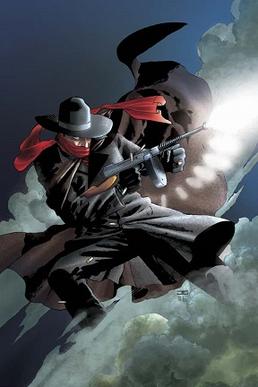
The Shadow is a fictional character created by American magazine publishers Street & Smith and writer Walter B. Gibson. Originally created to be a mysterious radio show narrator, and developed into a distinct literary character in 1931 by Gibson, The Shadow has been adapted into other forms of media, including American comic books, comic strips, serials, video games, and at least five feature films. The radio drama included episodes voiced by Orson Welles.

Jonathan Creek is a long-running British mystery crime drama series produced by the BBC and written by David Renwick. It stars Alan Davies as the title character, who works as a creative consultant to a stage magician while also solving seemingly supernatural mysteries through his talent for logical deduction and his understanding of illusions.
Clayton Rawson was an American mystery writer, editor, and amateur magician. His four novels frequently invoke his great knowledge of stage magic and feature as their fictional detective The Great Merlini, a professional magician who runs a shop selling magic supplies. He also wrote four short stories in 1940 about a stage magician named Don Diavolo, who appears as a minor character in one of the novels featuring The Great Merlini. "Don Diavolo is a magician who perfects his tricks in a Greenwich Village basement where he is frequently visited by the harried Inspector Church of Homicide, either to arrest the Don for an impossible crime or to ask him to solve it."
Yours Truly, Johnny Dollar is a radio drama that aired on CBS Radio from February 18, 1949 to September 30, 1962.
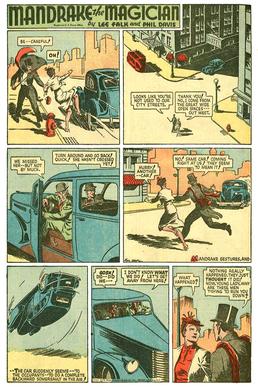
Mandrake the Magician is a syndicated newspaper comic strip, created by Lee Falk before he created The Phantom. Mandrake began publication on June 11, 1934. Phil Davis soon took over as the strip's illustrator, while Falk continued to script. The strip was distributed by King Features Syndicate.

I Love a Mystery is an American radio drama series that aired 1939–44, about three friends who ran a detective agency and traveled the world in search of adventure. Written by Carlton E. Morse, the program was the polar opposite of Morse's other success, the long-running One Man's Family.
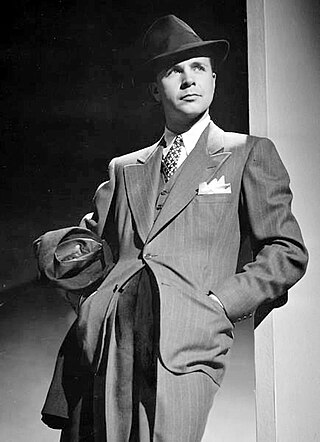
Richard Diamond, Private Detective is an American detective drama, created by Blake Edwards, which aired on radio from 1949 to 1953, and on television from 1957 to 1960.
Walter Brown Gibson was an American writer and professional magician, best known for his work on the pulp fiction character The Shadow. Gibson, under the pen-name Maxwell Grant, wrote "more than 300 novel-length" Shadow stories, writing up to "10,000 words a day" to satisfy public demand during the character's golden age in the 1930s and 1940s. He authored several novels in the Biff Brewster juvenile series of the 1960s. He was married to Litzka R. Gibson, also a writer, and the couple lived in New York state.

The Adventures of Superman is a long-running radio serial that originally aired from 1940 to 1951 featuring the DC Comics character Superman.

Harry Bouton Blackstone was a famed stage magician and illusionist of the 20th century. Blackstone was born Harry Bouton in Chicago, Illinois. He began his career as a magician in his teens and was popular through World War II as a USO entertainer. He was often billed as The Great Blackstone. His son Harry Blackstone Jr. also became a famous magician. Blackstone Sr. was aided by his younger brother, Pete Bouton, who was the stage manager in all his shows. Blackstone Sr. was married three times. Blackstone Jr. was his son by his second wife.

Don Wilson was an American announcer and actor in radio and television, with a Falstaffian vocal presence, remembered best as the rotund announcer and comic foil to the star of The Jack Benny Program.

Reed Hadley was an American film, television and radio actor.
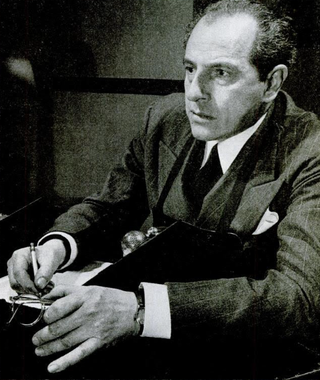
Joseph Dunninger, known as "The Amazing Dunninger", was one of the most famous and proficient mentalists of all time. He was one of the pioneer performers of magic on radio and television. A debunker of fraudulent mediums, Dunninger claimed to replicate through trickery all spiritualist phenomena.

Nick Carter, Master Detective is a Mutual radio crime drama based on tales of the fictional private detective Nick Carter from Street & Smith's dime novels and pulp magazines. Nick Carter first came to radio as The Return of Nick Carter, a reference to the character's pulp origins, but the title was soon changed to Nick Carter, Master Detective. A veteran radio dramatist, Ferrin Fraser, wrote many of the scripts.
Imagination Theatre is an American syndicated radio drama program airing on AM & FM radio stations across the United States. It features modern radio dramas. The program first aired in 1996. Originally produced by Jim French Productions, the program is now produced by Aural Vision, LLC.
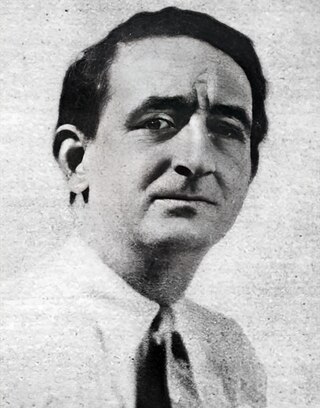
Charles Fulton Oursler Sr. was an American journalist, playwright, editor and writer. Writing as Anthony Abbot, he was an author of mysteries and detective fiction. His son was the journalist and author Will Oursler (1913–1985).
This is a complete list of books by Walter B. Gibson published during his lifetime and after his death.
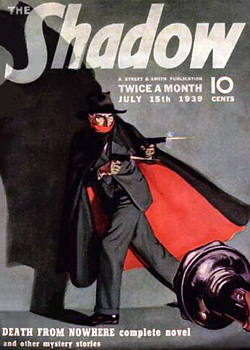
The Shadow was an American pulp magazine that was published by Street & Smith from 1931 to 1949. Each issue contained a novel about the Shadow, a mysterious crime-fighting figure who had been invented to narrate the introductions to radio broadcasts of stories from Street & Smith's Detective Story Magazine. A line from the introduction, "Who knows what evil lurks in the hearts of men? The Shadow knows", prompted listeners to ask at newsstands for the "Shadow magazine", which convinced the publisher that a magazine based around a single character could be successful. Walter Gibson persuaded the magazine's editor, Frank Blackwell, to let him write the first novel, The Living Shadow, which appeared in the first issue, dated April 1931.
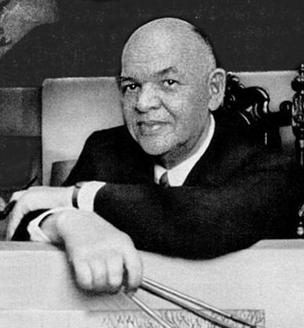
Elmer Cecil Stoner was an American comics artist and commercial illustrator. Stoner was one of the first African-American comic book artists, and is believed to have created the iconic Mr. Peanut mascot. He produced pencil art for the first issue of Detective Comics, published by National Comics Publications, and worked for a variety of other golden age companies such as Timely Comics, Street & Smith, EC Comics, Fawcett Comics, and Dell Comics. Near the end of his life, Stoner was also a spokesman for Gordon's Gin.
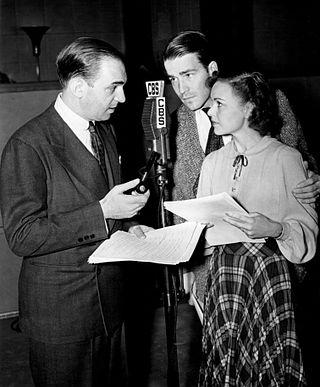
The Adventures of Ellery Queen was a radio detective program in the United States. Several iterations of the program appeared on different networks, with the first one broadcast on CBS on June 18, 1939, and the last on ABC on May 27, 1948.
References
- ↑ "Blackstone The Magic Detective .. episodic log". otrsite.com.
- ↑ "Blackstone, the Magic Detective Episode Log" . Retrieved 2008-02-20.
- ↑ "Blackstone, the Magic Detective" . Retrieved 2009-09-24.
- ↑ Dunning, John (1998). On the Air: The Encyclopedia of Old-Time Radio (Revised ed.). New York, NY: Oxford University Press. p. 96. ISBN 978-0-19-507678-3 . Retrieved 2019-08-22.